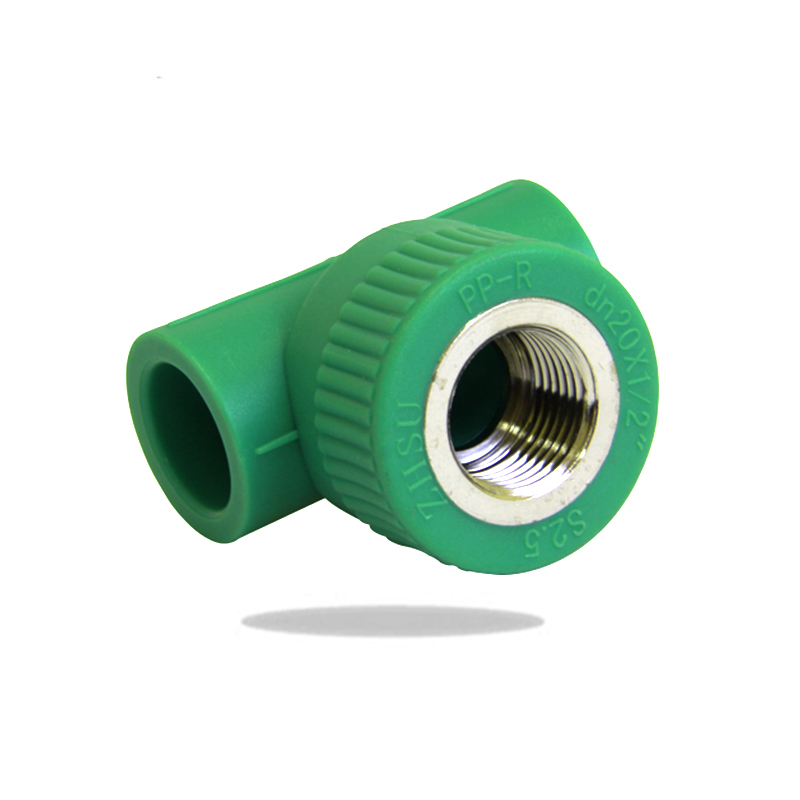The performance of PPR Tee in low-temperature environments is an important consideration, especially in cold areas or piping systems that need to withstand low-temperature environments. The performance of PPR materials is closely related to temperature, so its performance may change when used at low temperatures. Here are some key points about the performance stability of PPR Tee at low temperatures:
PPR material is a thermoplastic whose properties are significantly affected by temperature. At normal temperature, PPR materials have good toughness and corrosion resistance, but in low temperature environments, their physical properties may change:
When the ambient temperature drops, the toughness of PPR materials will decrease and become more fragile. Extremely low temperatures may cause PPR Tee to crack or break when impacted or compressed by external forces. This increased brittleness is due to the reduced mobility of the polymer chains at low temperatures, making the material less ductile.
The low temperature adaptability range of PPR materials is usually between -20°C and +60°C. In environments below -20°C, the performance of PPR Tee may be unstable, so the application of PPR Tee in extremely cold areas requires special care.
The connection of PPR Tee usually uses hot melt welding. This connection method has certain requirements on temperature:
In low-temperature environments, the hot-melt connection process of PPR pipes may be affected. At lower temperatures, the hot-melt welding surface of PPR pipes may not achieve the ideal welding effect, resulting in an unstable connection or even leakage or breakage. Therefore, when performing hot-melt connection in a low-temperature environment, it is usually necessary to pay special attention to the temperature control of the heating equipment to ensure that the welding temperature reaches the specified standard.
In a low-temperature environment, the cooling rate of the PPR Tee after welding is accelerated, which may affect the strength and stability of the welded joint. Particularly in cold weather, welded joints may not be fully cured or put into service before reaching optimal strength, affecting the reliability of the entire system.
The pressure resistance of PPR Tee will decrease in low temperature environments. Due to the increased brittleness of the PPR material, it may not be as stable in high-pressure systems as it is in normal temperature environments. If the piping system at low temperatures is subjected to high pressure, the PPR Tee may crack or leak, especially in rapidly changing temperature environments.

In order to ensure that PPR Tee used in low-temperature environments has sufficient strength and pressure resistance, additional insulation is sometimes performed on the piping system. For example, when used in cold areas, pipes can be insulated to prevent damage caused by freezing or low temperatures.
Although the low-temperature performance of PPR Tee is limited, the following measures can be taken to improve its stability in low-temperature environments:
Some PPR pipes and accessories have been optimized in raw material formulas, using modified PPR materials to improve their low-temperature performance. These modified PPR materials usually have better low-temperature toughness and can maintain stable performance at lower temperatures.
For PPR Tee used in cold areas, you can avoid the impact of low temperature on its performance by adding an insulation layer or installing it in warmer places such as indoors and underground. The insulation layer can effectively prevent freezing and material embrittlement problems caused by low temperatures.
For the design of pipeline systems in low-temperature environments, reasonable pipeline layout and installation methods can be used to prevent pipelines from being exposed to excessively low temperatures. Adopting appropriate pipeline depth and installing in anti-freeze rooms can effectively protect the PPR Tee and the entire pipeline system.
In extremely cold areas, if the low-temperature performance of PPR Tee cannot meet the use needs, you may need to consider other pipe fittings that are more suitable for low-temperature environments. Common alternative materials include:
PVC materials usually have good low-temperature resistance and can maintain good toughness at lower temperatures, so they can be used as an alternative to PPR Tee in low-temperature environments.
Polyethylene (PE) material has strong low-temperature resistance, especially in severe cold environments. The toughness and crack resistance of PE pipeline systems are better than those of PPR, so it can also be used as an alternative option in low-temperature environments.
In low-temperature environments, the performance of PPR Tee will be affected to a certain extent, mainly as the brittleness of the material increases, the connection strength decreases, and the pressure resistance decreases. Therefore, PPR Tee is usually suitable for use in environments with temperatures no lower than -20°C. For colder areas, special attention needs to be paid to insulation measures during installation, or materials and products more suitable for low temperatures should be considered. When using PPR Tee, appropriate materials must be selected according to specific climate conditions and application scenarios to ensure long-term stable operation of the pipeline system.

 简体中文
简体中文 English
English русский
русский Español
Español Français
Français عربى
عربى Português
Português 日本語
日本語 italiano
italiano Nederlands
Nederlands Polskie
Polskie












